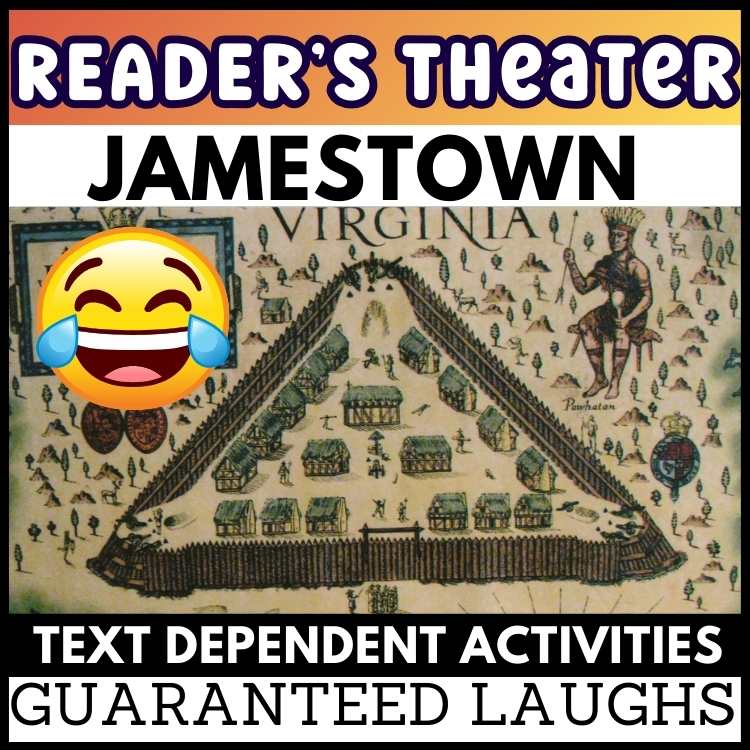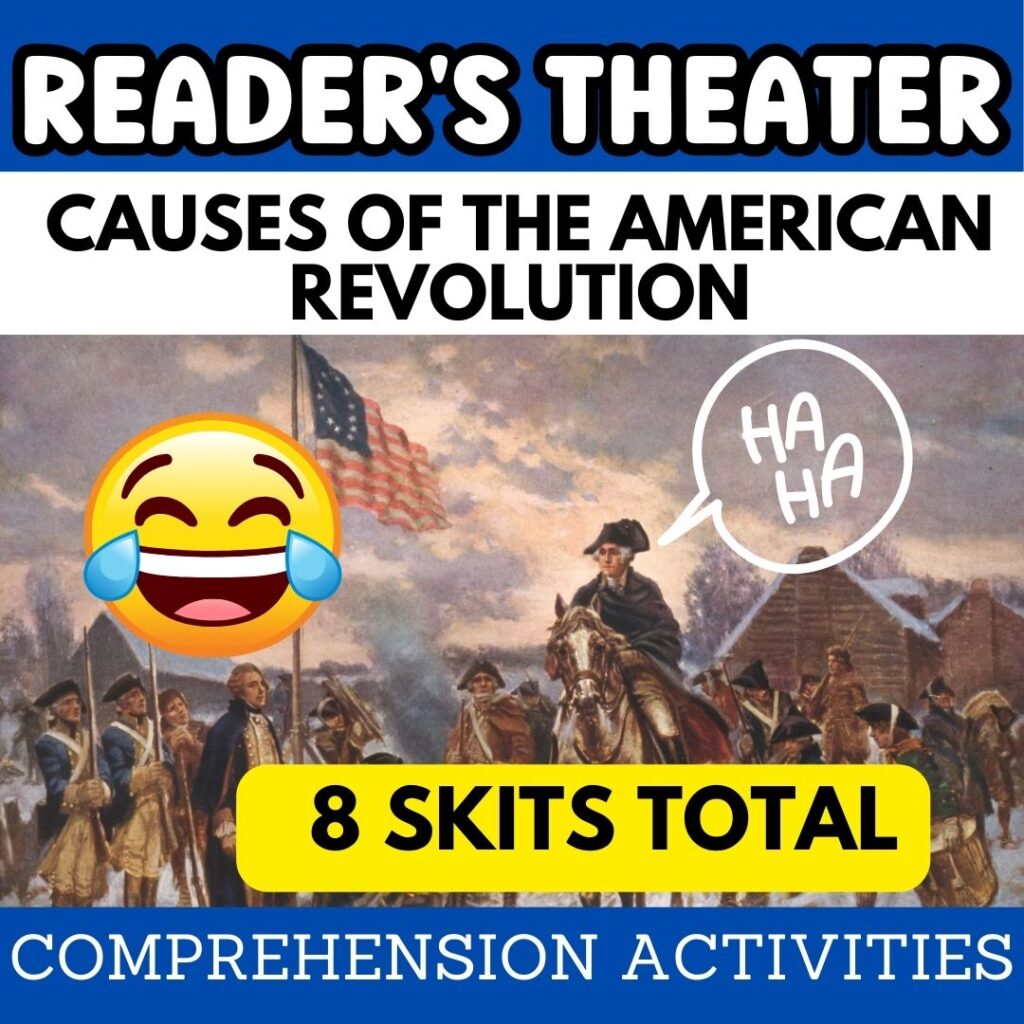What is Readers Theater and How Can It Improve Reading Fluency?
Using Readers Theater scripts is a fun, low-stress way to get your upper elementary students reading out loud and engaging with content in a whole new way. It’s like a mini-play, but without the pressure of memorizing lines or using fancy costumes.
Students read directly from scripts that are usually based on stories, historical events, or even science topics. The focus is on reading with expression, improving fluency, and bringing the characters or events to life just through their voice. It’s a fun way to combine reading, comprehension, and a bit of drama into your lessons!
Setting up Readers Theater Scripts for Elementary Classrooms
Choosing an Age-Appropriate Script
It’s important to consider the grade level of your students when selecting Readers Theater scripts for your elementary students. My skits are written for upper elementary and most can be read by 4th-6th grades.
The dialogue is conversational so many students read their lines fluently. However, there are domain-specific vocabulary words that need to be taught explicitly before students read the script.
Think about what material you need to teach for the month. State standards for Social Studies vary by state so choose Readers Theater scripts that align to your standards and curriculum goals. For example, in 5th grade here in California, students learn about the American Revolution so I use skits that teach students about the Causes of the American Revolution.
Not only is Readers Theater an engaging activity, but it improves fluency and develops literacy skills. Students have so much fun with historical Readers Theater that they don’t even realize how much they are learning.
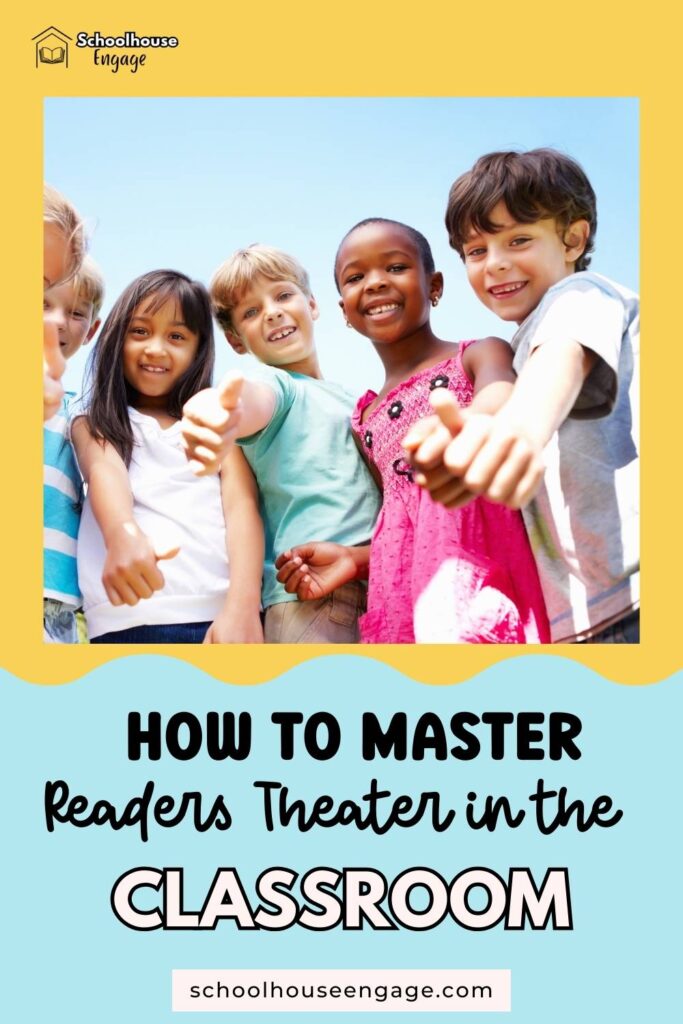
Print out Scripts and Highlight Character Names
A few of my students try to memorize their lines but I don’t encourage it. The disadvantage is that when they forget their line (and they will) there is a pause in the performance and other students have to help them remember their lines. This disrupts the classroom performance.
Instead, students should each have a copy of the script that they read from. Have your students highlight the name of their character so they know when it is their turn to speak.
Print Out Character Name Tags
When your students wear name tags, not only does it help the performers know who is who, but it also helps your students tell a reader to go next if they aren’t paying attention.
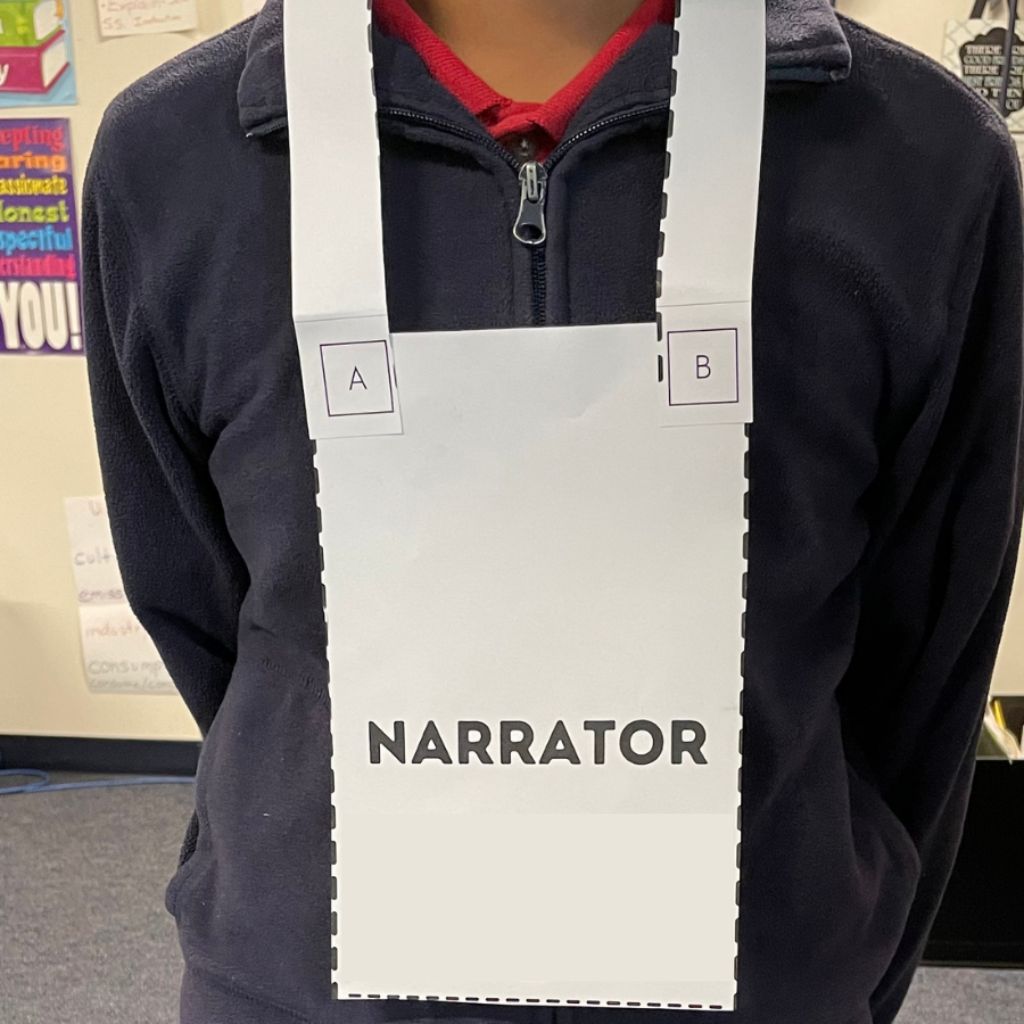
In all honesty, I don’t print name tags for all my students. I only print them out for the performers who are actually going to perform. Making the name tags that I create is very simple. Here is a video to show you how:
Assign Your Readers Theater Small Groups
Assign your students to a group or give them the liberty to choose who they want to be in a group with. I suggest a mix of both because encouraging student choice makes learning more fun.
When I’m limited on time, I let my students choose but if I see that the same students are always together, I will choose who they get in a group with randomly.
I have a mug filled with popsicle sticks and each one has a student’s name. If I need 4 students in a group, I pull out 4 popsicle sticks randomly, and I continue until all groups are formed.
Balancing Speaking Parts
Many Readers Theater scripts do not have balanced speaking roles. The Readers Theater scripts I use have characters who speak about the same amount of time except for the narrator. When speaking parts are balanced, this keeps students on their toes because they know that their part is coming up next.
Sometimes there will be 4 speaking parts and 5 students. If that is the case, I have two students divide the lines of one character or the narrator. I also do this with struggling readers so they aren’t overwhelmed with reading.
Encourage Multiple Readings to Improve Reading Fluency
The beauty of Readers Theater is that your students will read their script multiple times but it won’t feel cumbersome because they are reading with a purpose. My students practice their lines at least 3-5 times before they actually perform.
Encourage your students to practice on their own by reading their lines. Ask them to take their script home and to practice with a family member.
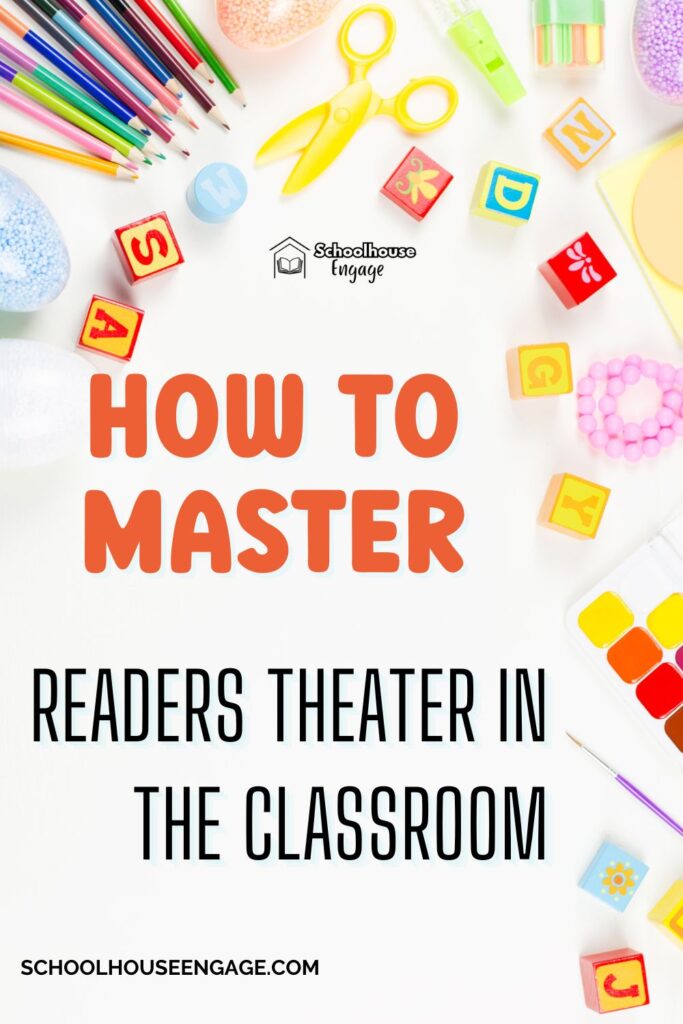
How to Prepare Students for a Readers Theater Classroom Performance
Provide a Space for the Readers Theater Performance
Depending on where you are going to have your students perform their skit, you may want to arrange seating so that the audience can be close to where the students are performing.
If your students are performing for classmates, have students get out of their seats and sit on the floor if your classroom space allows for that. This will allow for optimal engagement.
I have a small classroom, so my students stay in their seats while other students perform in front of a View Board. I pull up an image from the internet of a setting that I imagine would be a good backdrop.
If you are fortunate enough to have a stage at your school that you can use, by all means, do it! This makes the performance extra special and exciting.
Divide Up the Performances
If your students are learning about a historical topic, why not perform multiple skits? For example, if you are teaching the Causes of the American Revolution, divide up your students into groups and assign a particular skit for them to perform.
Below are some skits that they can perform on stage:
I suggest that they perform a few each day, not all at once.
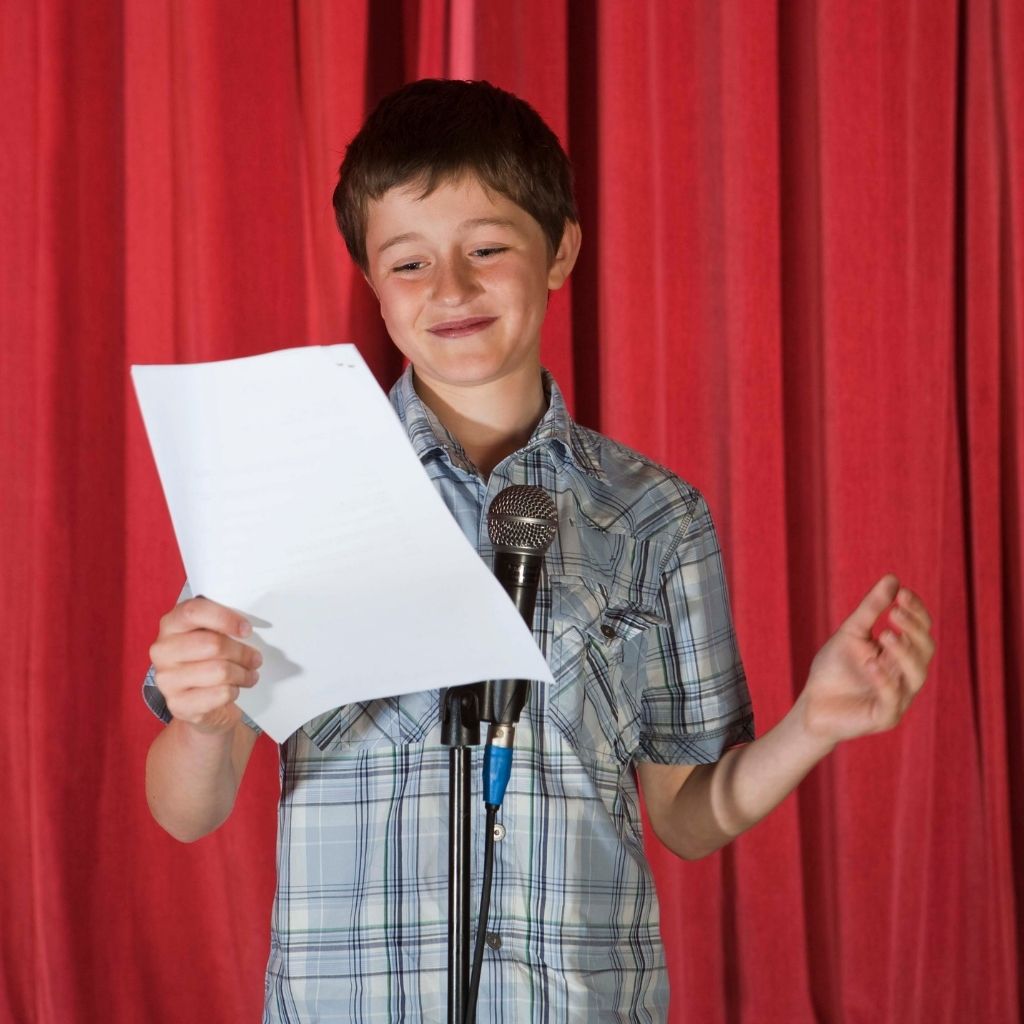
Props and Costumes
We do a lot of short skits in my classroom, so we don’t always use props and costumes. However, every once in a while, my students will want to dress up as the historical figures they portray in the skit, so I encourage them to do so.
They make these costume and prop decisions on their own. Some of my students will wear dresses or a long skirt if they are portraying women in the past. Others might wear button-up shirts and a tie to look more formal.
My students are very creative and often times they create props out of paper. I’ve had a student create a sword when acting out a skit from my European Explorers Readers Theater. Props aren’t necessary, but the kids love to use them.
If you think creating props will take up too much instructional time, have your students create them at home. They are usually very eager to do so.
How to Make Readers Theater More Fun
To make Readers Theater more interactive, I encourage my students to come up with their own ideas of movement and gestures. I also encourage them to use a different tone or voice based on their character. This will bring about laughter in your classroom.
Allowing students to work in a group of their choice also keeps students interested. I suggest allowing them to do this from time to time.
Managing Classroom Behavior
You probably won’t have any behavior issues when students are rehearing their lines for Readers Theater, but you will have students who may yell when reading their lines or when discussing how they want to act out their part.
Make sure to discuss some norms of how you want the sound level to be. I encourage my students to use emotion when reading their lines, but yelling or screaming is never ok. There will be a lot of talking and commotion when students are rehearsing their lines if all groups are practicing at once. So, make sure you have a good call and response procedure.
Some to try are:
- Class, Class
- Yes, Yes
- Hocus Pocus
- It’s time to focus
Or if you have a bell or some sound device, save your voice and use that! Whatever it is, you’ll need something to signal to the students that you want them to be quiet because it will get very noisy!
Addressing Participation Issues
From time to time, there will be that one student who just does not want to participate in Readers Theater. They might just refuse. So, try this: ask them to create a prop for the skit or an invitation for another classroom to watch the performance. This allows for participation without having to actively be a character from the skit.
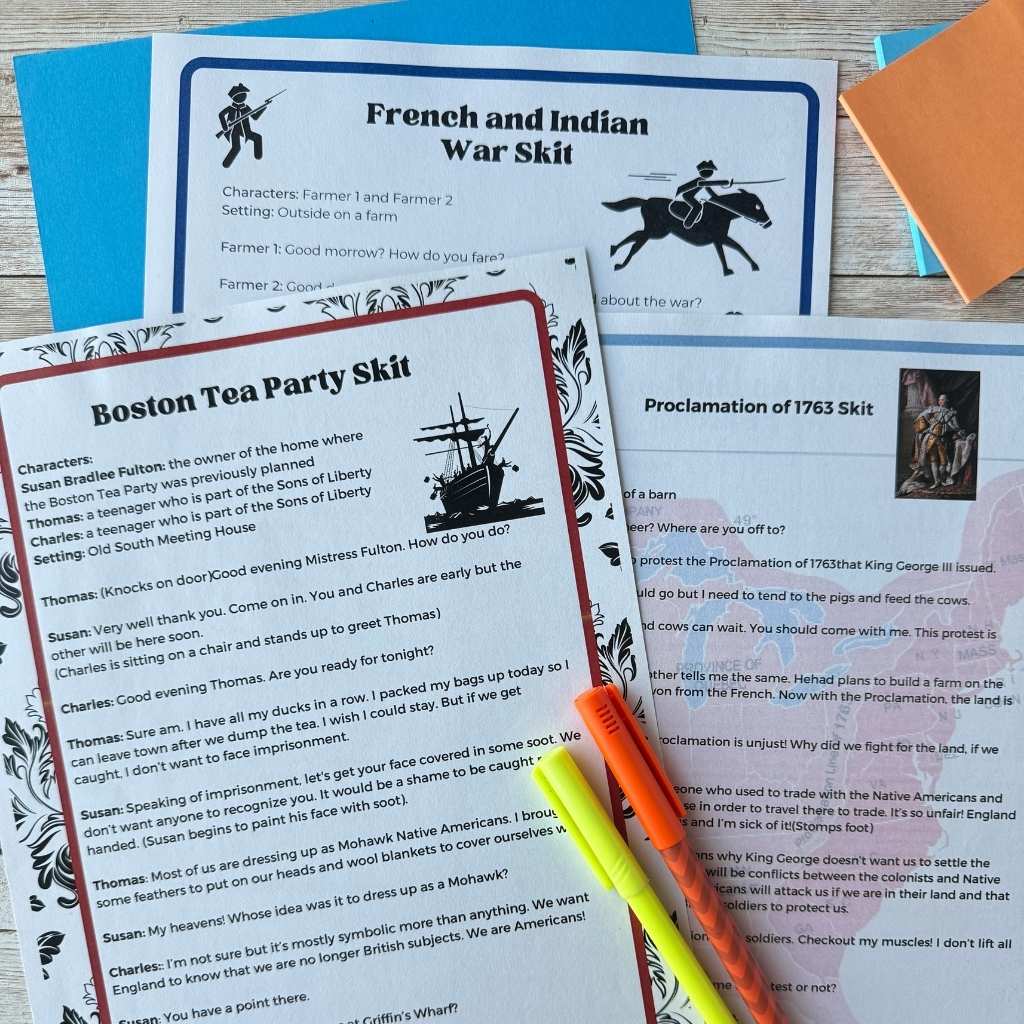
Preparing for a Performance on Stage
Organizing a Dress Rehearsal
If you are going to perform the Readers Theater on stage with an audience, it’s critical to simulate the final performance. Make sure that your students know when to start and what to do if they make a mistake. Some questions to consider:
Should they walk off the stage when the skit is done or wait for the curtains to close?
How will the audience know when the skit is done?
When the performance is over, will they return to the stage to bow?
All of these things need to be decided on before the day of the performance.
Inviting an Audience
Involve parents by inviting them to the performance. Create a flyer and be sure to give your parents ample time so they can schedule to come.
Another option is to perform for another class that is also learning about the historical events that the skit is about. Or invite your admin to see the performance.
Record the Performance
Instead of doing a live performance, have your students record themselves acting out the skit. They can post their video on Flip Grid or another video-sharing website that is approved by your district. Then your whole class can watch the performance.
If you go this route, make sure that all students submit a video, and discuss how students should not critique each other but instead motivate and compliment each other.
Final Thoughts
Readers Theater is more than just a fun classroom activity—it’s an engaging way to boost reading fluency, deepen comprehension, and bring historical content to life. By focusing on expression, teamwork, and creativity, students become more confident readers while having fun in the process.
Whether you’re tackling subjects like the Causes of the American Revolution or the 13 Colonies, incorporating Readers Theater is a way to energize your lessons and motivate your students. Try it in your classroom and watch how much fun your students will have.
Download my Free Causes of the American Revolution Stamp Act skit!
Looking for Readers Theater scripts for your upper elementary students to teach Social Studies? Check out some of my best sellers to help students master both history and reading fluency.

